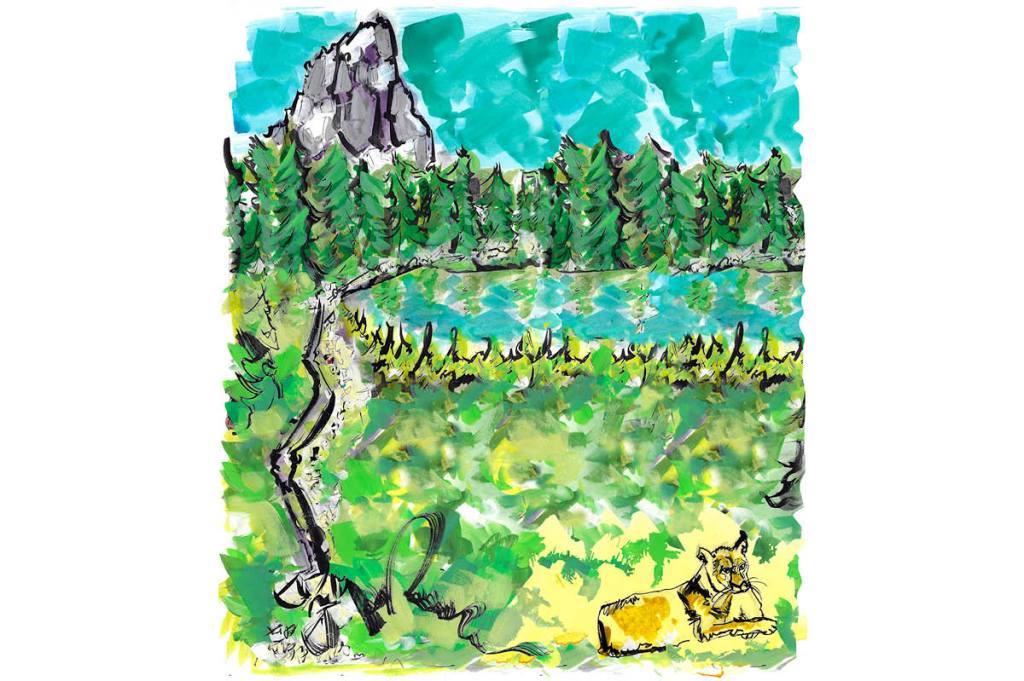The Pacific Crest Trail is one of the world’s great long-distance hikes, running 2,650 miles from Mexico to the Canadian border. It’s a chance to see some of North America’s most majestic scenery, encompassing desert and mountain, and millions of people visit parts of it each year, to hike or run. But only a very few ever walk the whole thing. Completing the entire trail — a “thru-hike” — takes five months. The challenge breeds a kind of camaraderie among hikers, who acquire “trail names” (the 2022 finishers included individuals known as “Sparkle Lizard,” “Milkshake” and “Squiggles”) and become part of a select group. Like its Eastern counterpart, the Appalachian Trail, it is a badge of honor for those who make it through.
The romance of the trail unfortunately leads some to overlook its dangers. Hikers die on the PCT, from hypothermia, drowning and falls. Many more have to abandon their hikes due to injury. Some vanish altogether. Andrea Lankford’s Trail of the Lost is about what happens next.
Lankford is a former National Park Service ranger and established author; her earlier book, Ranger Confidential, detailed the darker side of America’s national parks, from criminals operating within them to the dangers that befall unsuspecting visitors. Asked to look into the case of one missing hiker on the PCT, she discovered he was one of three recent disappearances: one each in 2015, 2016 and 2017.
The missing men — Chris Sylvia, Kris Fowler and David O’Sullivan — left the small hints that hikers do: a trail name in a visitor log, a credit-card receipt, a cashier’s recollection of a purchase. Sylvia also left his gear, neatly laid out on a hill, like an ambulatory Marie Celeste. It looked as though he had just stepped away for a moment; the witness who found his belongings assumed he had. The others did not leave anything. How much further they may have hiked from where they were last seen is part of the mystery.
Lankford’s experience meant she knew what searchers were up against. She writes openly about her search and rescue missions for NPS and how she is still haunted by those that failed. People who weren’t found in time, or weren’t found at all. She has faced families trying to emotionally recalibrate from “rescue” to “recovery.” She makes us care about the lost men through details of their lives before the PCT, and the volunteers keeping the searches going.
A long-running case can involve multiple groups pitching in over the years: from on-the-ground search parties, to data analysts mining phone GPS records. It also involves some hard choices, not least whether to put others at risk. How much danger is justified to find a body? (Lankford, despite her skills, ends up breaking an ankle following a lead in difficult terrain.)
Lankford shows us how missing persons cases work differently out in the wild. If someone fails to show up at work one day, police know where and when to start tracing their movements. They know which police department has jurisdiction. But when someone vanishes on a long-distance hike, it’s harder to pinpoint the event, or choice, that diverted their path. It might be days or weeks before someone even raises the alarm. Which police force has jurisdiction is unclear, and the authorities can be reluctant to devote resources to someone having (possibly) lost their way, at an unknown point, at some time in the past. Searching means tracking down other hikers, known to each other only by trail name, and tapping their recollections of who they may have passed weeks earlier.
Recollections they may be reluctant to share: Lankford has to win over a taciturn camp manager to get any information on who had visited. A culture of “what happens on the trail, stays on the trail” is part of the vibe, and the great outdoors can attract individuals who want to stay out of sight. (There have been no reported murders on the PCT, but there have been more than a dozen on the Appalachian Trail.) The PCT passes several agricultural enterprises of dubious legality, patrolled by armed men, who reportedly don’t take kindly to curious hikers — nor, presumably, to chatty witnesses.
Then there are wild animals: bears, cougars and snakes, any of which could have ended a hiker’s journey. There’s also the chance that people who went missing chose to wander off themselves. Long-distance hiking draws seekers of something else. They’ve left their jobs and homes for a reason: freedom, enlightenment, a new path. They may decide not to go back. There is even a religious cult that allegedly recruits along the trail.
For those of us whose outdoorsiness doesn’t go much further than the visitor center and the picnic area, it’s difficult to grasp the distances involved in a wilderness search. Volunteers spend hours trying to distinguish a pixelated shoe, or tent — or bone — from an aerial photograph.
Most of the searching is the work of volunteers, for better or worse. Facebook groups focusing on the missing attract generous helpers, bringing their skills — but are also a magnet for trolls and scammers. (Lankford encounters one claiming to have a body-finding contraption which traces DNA in the air.)
The real science of searching in nature is the most interesting — and disturbing — part of Lankford’s account. Models have been built of how humans behave when lost in the wild. We are quite predictable, and gendered, in how we respond at the moment we realize we don’t know where we are (and women are more likely to survive). People with dementia walk in a straight line until stopped by scrub or terrain — like one unfortunate woman near the PCT whose body was found only 500 feet from her car. She was that close, but the scrub was so dense it took drone searchers to spot her clothing.
This article was originally published in The Spectator’s September 2023 World edition.

























